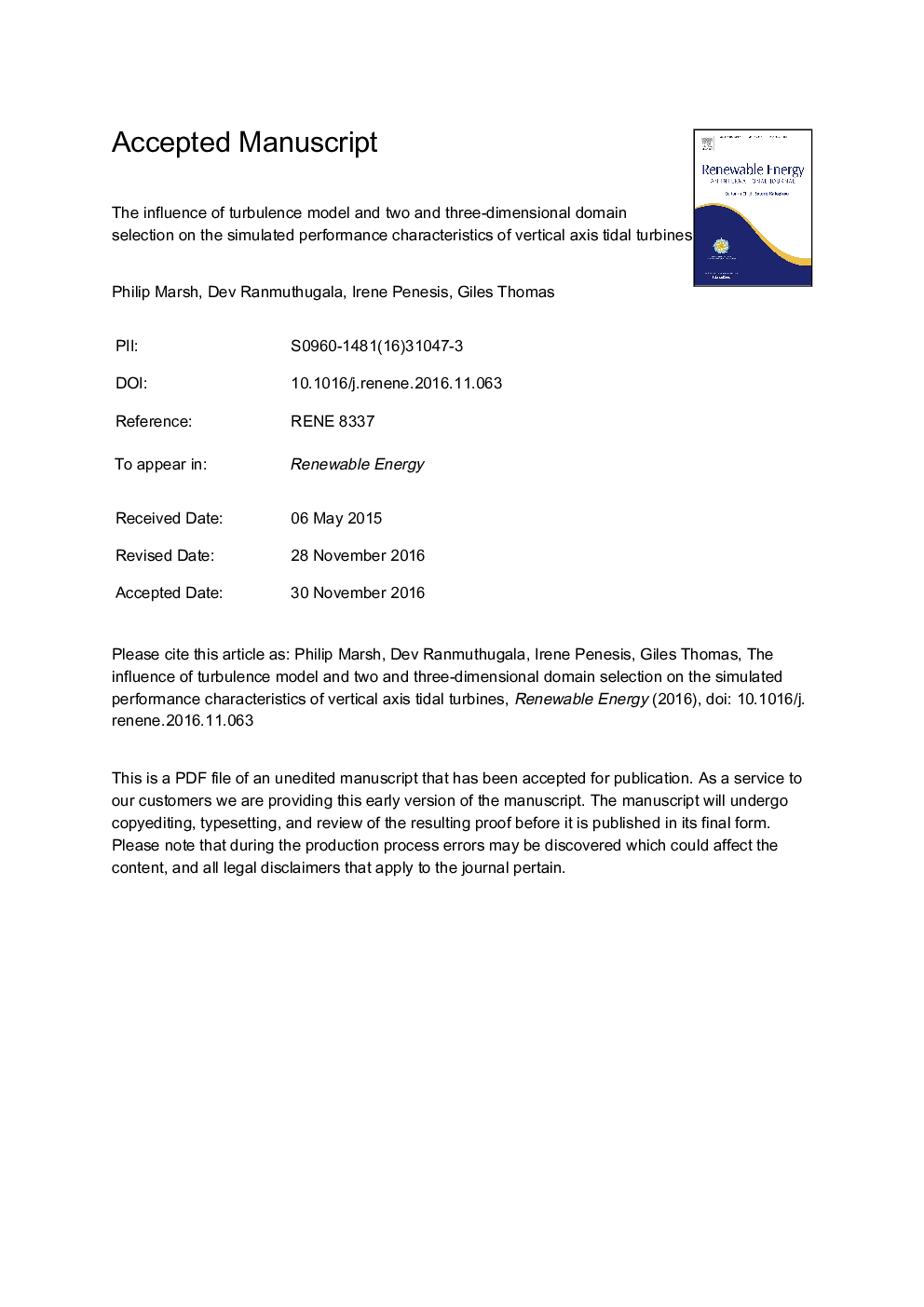| کد مقاله | کد نشریه | سال انتشار | مقاله انگلیسی | نسخه تمام متن |
|---|---|---|---|---|
| 4926421 | 1431599 | 2017 | 30 صفحه PDF | دانلود رایگان |
عنوان انگلیسی مقاله ISI
The influence of turbulence model and two and three-dimensional domain selection on the simulated performance characteristics of vertical axis tidal turbines
ترجمه فارسی عنوان
تأثیر مدل آشفتگی و انتخاب دو بعدی و سه بعدی بر ویژگی های شبیه سازی شده توربین های جزر و مد عمودی
دانلود مقاله + سفارش ترجمه
دانلود مقاله ISI انگلیسی
رایگان برای ایرانیان
کلمات کلیدی
توربین محور عمودی، دینامیک سیالات محاسباتی، مدل آشفتگی دامنه محاسباتی، انتقال آرام به آشفته
موضوعات مرتبط
مهندسی و علوم پایه
مهندسی انرژی
انرژی های تجدید پذیر، توسعه پایدار و محیط زیست
چکیده انگلیسی
The influence of Computational Fluid Dynamics (CFD) modeling techniques on the accuracy of fixed pitch vertical axis turbine power output predictions was investigated. Using Two-Dimensional (2D) and Three-Dimensional (3D) models, as well as the Baseline-Reynolds Stress Model (BSL-RSM) and the k-Ï Shear Stress Transport (k-Ï SST) model in its fully turbulent and laminar-to-turbulent formulation, differences in power output modeling accuracy were evaluated against experimental results from literature. The highest correlation was found using a 3D domain model that fully resolved the boundary layer combined with the k-Ï SST laminar-to-turbulent model. The turbulent 3D fully resolved boundary layer k-Ï SST model also accurately predicted power output for most rotational rates, at a significantly reduced computational cost when compared to its laminar-to-turbulent formulation. The 3D fully resolved BSL-RSM model and 3D wall function boundary layer k-Ï SST model were found to poorly simulate power output. Poor output predictions were also obtained using 2D domain k-Ï SST models, as they were unable to account for blade tip and strut effects. The authors suggest that 3D domain fully turbulent k-Ï SST models with fully resolved boundary layer meshes are used for predicting turbine power output given their accuracy and computational efficiency.
ناشر
Database: Elsevier - ScienceDirect (ساینس دایرکت)
Journal: Renewable Energy - Volume 105, May 2017, Pages 106-116
Journal: Renewable Energy - Volume 105, May 2017, Pages 106-116
نویسندگان
Philip Marsh, Dev Ranmuthugala, Irene Penesis, Giles Thomas,
